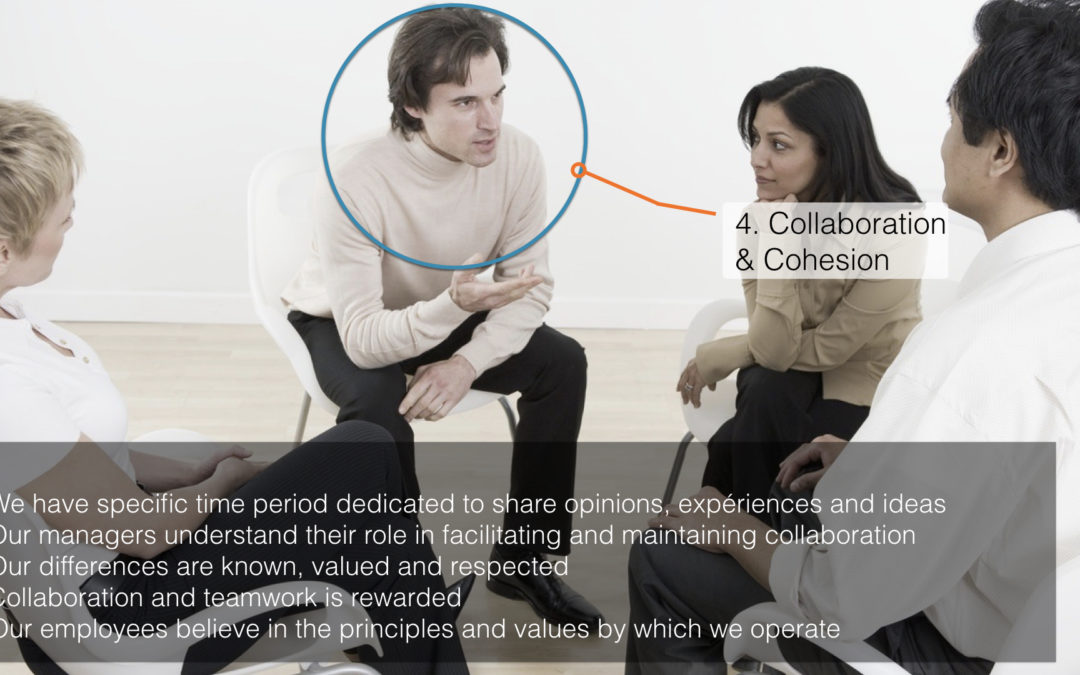Collaboration & Cohesion
“We build too many wallsand not enough bridges” – I. Newton
“Tell me, why is it that management tells us to work together, when the Directors are doing the exact opposite and defending their territory”, “With this silo mentality, it’s no surprise everyone keeps themselves to themselves”, “We’ve grown so quickly that nobody knows what we stand for any more”, “In here, it’s a case of every man for himself”. Division of labour not only slow downs agility, it also has an impact on relationships within the workplace.
In the workplace ‘celebritising’ certain positions is common, which can often instigate a culture of competition between jobs. This effect is then accentuated by budgetary restraints (each ‘position’ must defend their corner) and individual reward and recognition policies (why was he promoted when I worked harder?).
This ‘culture of competition’ has a direct impact on collaboration in the workplace – subdivision due to division of labour, bureaucracy, centralisation of power etc. The role of management innovation is to reverse these effects, to bring people together, mobilise collective intelligence, allow people to express themselves and offer advice, strengthen links between individuals and nurture a convivial working atmosphere between different teams and departments and across companies as a whole.
There are several ways to rekindle those aspects which may previously have been lost: team-working spaces; team coaching; co-development workshops; extensive assessments and ‘open innovation’. Because, ultimately, collaboration is no longer limited to just business, it now covers working relationships with partners, customers, and even competitors (co-opetition).
Three examples of how you might strengthen collaboration and cohesion
- The US online shoes sales company, Zappos, with over 2000 employees, grew so fast that people no longer knew each other. Concerned about preserving workplace sociability and the company’s team-working ethos, the CEO, Tony Hsieh, developed a computer application. Each morning, when logging on to the computer system, a photo of a fellow employee pops up on the screen and the user is required to choose from three names. Whether they answer correctly or not, they then see a biography and profile of their fellow employee. This unique practice is a perfect way of allowing staff to get to know their fellow workers from afar.
- At HCL Technologies, in India, a computer services company employing some 80,000 staff, the CEO, Vineet Nayar, has set up a process called ‘Feed Forward’. This is an entirely voluntary process which allows staff to give feedback on colleagues they work with, whether it be about skills they value in them, or areas in which they feel they could improve. Negating the need for formalities, this process is entirely anonymous and welcomed by staff. The idea is that it allows staff to look at areas of development which might benefit them, yet outside the traditional management appraisal approach.
- In France, SNCF have set up a ‘managerial community’ which is accessible to all management staff via an online portal. Through this portal, managers are able to share problems, exchange ways of working and even call other experts (other than their manager) for advice and support. This practice is particularly interesting for companies where managers are so compartmentalised that they often find themselves alone in dealing with managerial situations that have no obvious solution. The portal makes it possible to strengthen links between managers that share common problems, even though they may work in completely different professions. The opportunity to be able to share with other management employees also permits greater transparency, which is often not the case when discussing concerns with superiors (due to the fear of being frowned upon or because of the sensitivity of certain subject matters).



Recent Comments